Heidi Bucher’s Mummified Homes
The Swiss artist’s laborious and poignant look at shedding skin and memories

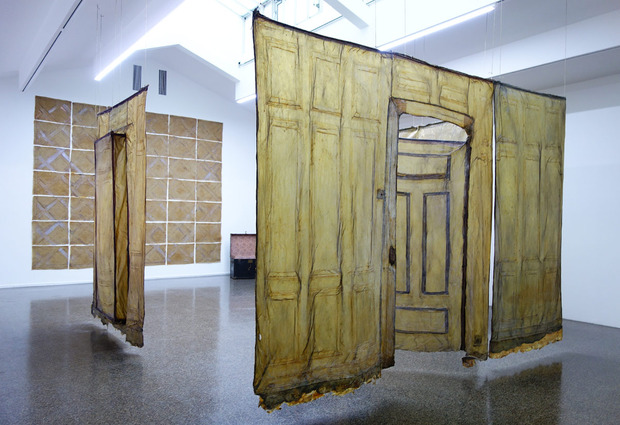
In 1993 Swiss artist Heidi Bucher passed away at 67 years old, leaving behind a portfolio of thoughtfully executed work. Bucher began making rubber latex casts over parts of houses comprising her life back in the ’70s and from that point forward her practice remained focused on mummifying these structures. Her approach was twofold: Garments and personal objects would be molded in rubber while fractions of houses would be cast using a special technique, which consisted of applying several layers of liquid latex over tulle—a textile she employed for its ability to easily form over any shape.
An exhibition now running at Paris’ Centre Culturel Suisse shows a particularly strong and touching work, dating 1977-1978, which deals with Bucher’s return to her family home in Winterthur, Switzerland.

“Herrenzimmer” (which translates from German as “master’s bedroom”) is the story of this personal attempt to save her past by mummifying the Winterthur home. She covered everything with a liquid latex layer—from the wooden wall panels to the wooden floor to old cast-iron heaters—and, just like peeling skin, she removed it but took with it an imprint of each surface she covered. The liquid latex that the artist uses is a natural white liquid which darkens into yellow and solidifies as white with the passing of time.

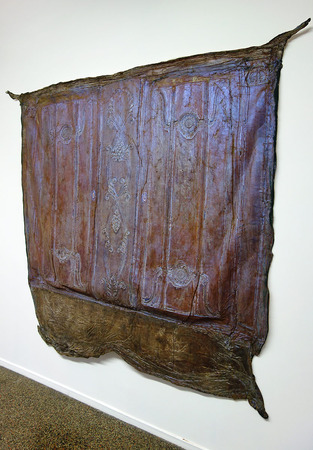
The upshot is a collection of large panels of fragile floating peels, semi-transparent and vaguely yellow pieces of a house. The tiled floor in the entrance, open windows with part of the wall they were attached to—everything is there. This primitive mummifying effect, or attempting to retain bygone loved ones, is as old as the world itself, but in the case of a Bucher’s treatment of the house as a human (dead) body, the out-of-reach aspect creates a particularly compelling physical narrative.
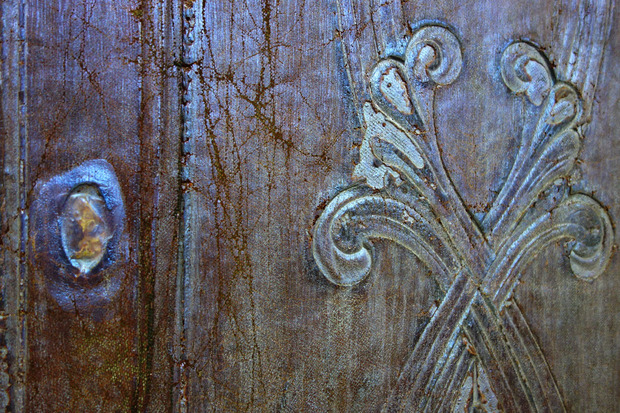
Bucher’s work can also be seen as a process for shedding her own skin and memories of her past, and, when considering her parents’ Winterthur home, hanging the replicated panels in exhibition halls gives lightness to a heavy familial past. This oversized photocopying operation is both insane by its proportions and meticulously achieved. The part which required physical strength and effort can be connected to performance art dominating the ’70s. In the retrospective monograph museum curator Heike Munder wrote about Bucher, she considers that what is attractive in Bucher’s work is all together the process, the absurdity of the objects and the fact that she uses a material which is not designed to last, as well as the lightness and poetic impression it offers.
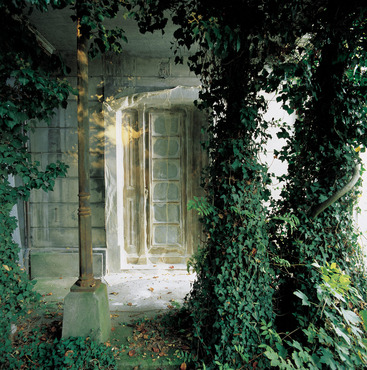

Also on view along with the “Herrenzimmer” fragments is an even more impressive project, “Ahnenhaus.” Using the same latex technique, she cast her ancestors’ house, all in one piece, and had the whole block lifted up by a crane. Out of this performance came beautiful pictures of the flying house showing yet another way Bucher freed oppressive feelings from her past.
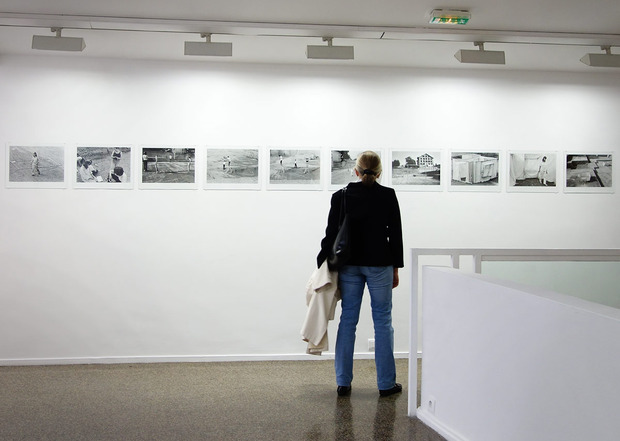
Bucher and her poignant works are now regaining growing interest, and several exhibitions are in preparation in Zurich, London and New York. The exhibition at Centre Culturel Suisse will run through 8 December 2013.
Gallery installation photos by Karen Day; house images courtesy of Centre Culturel Suisse












